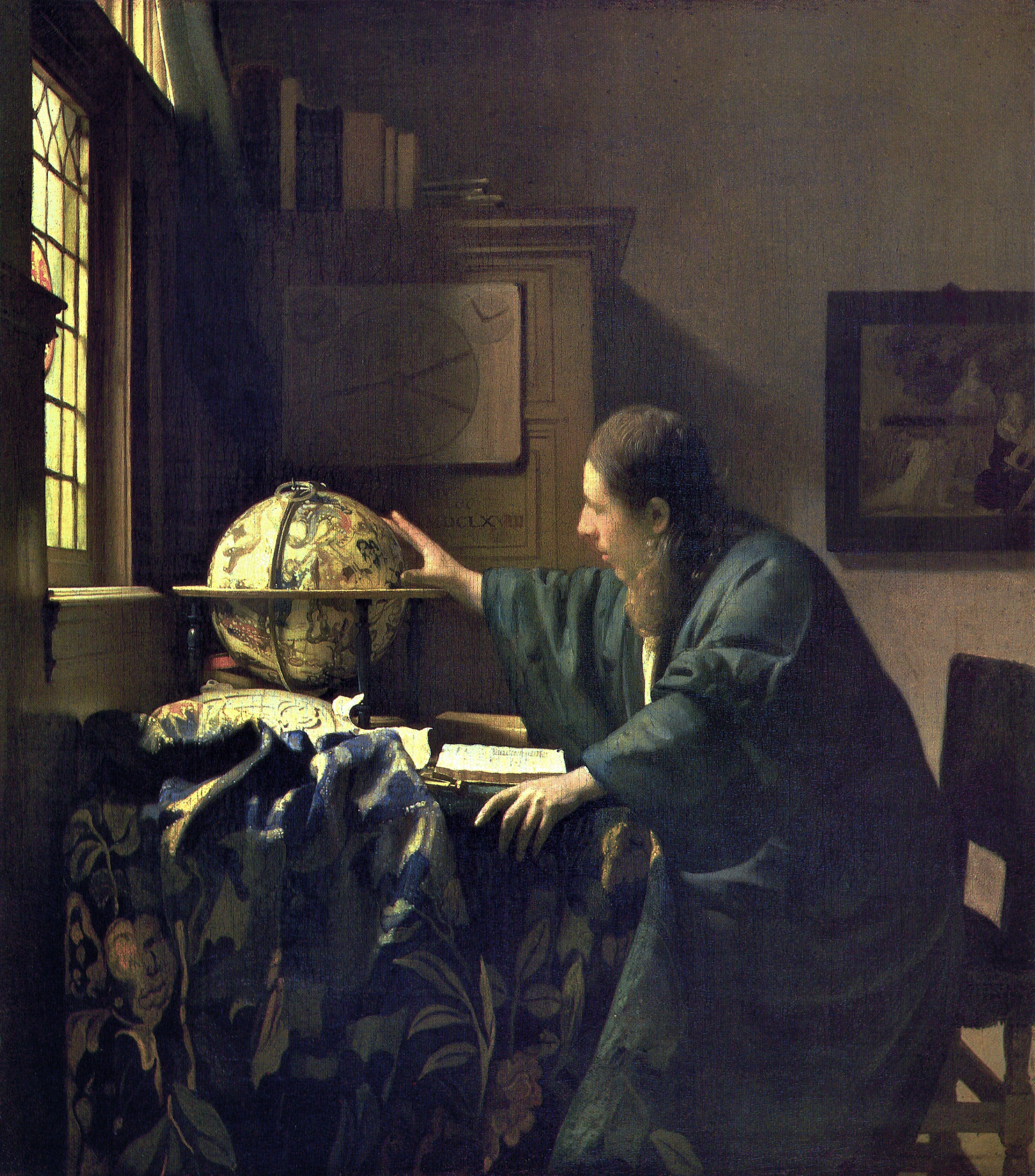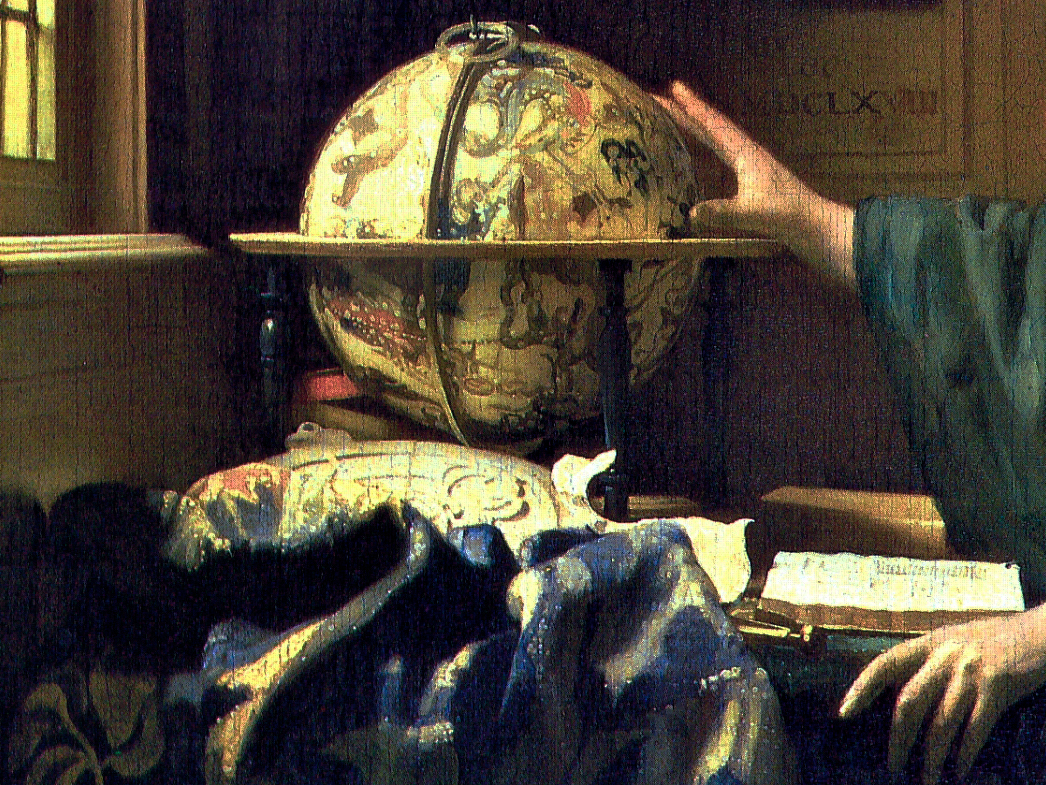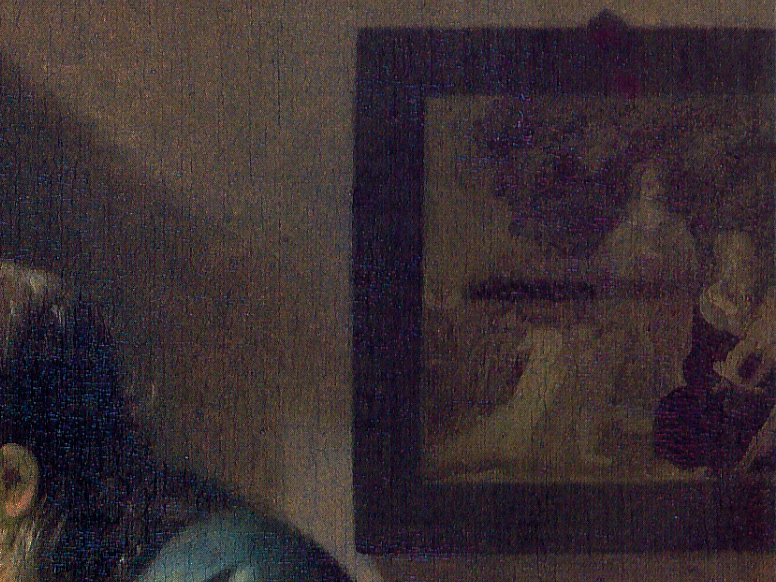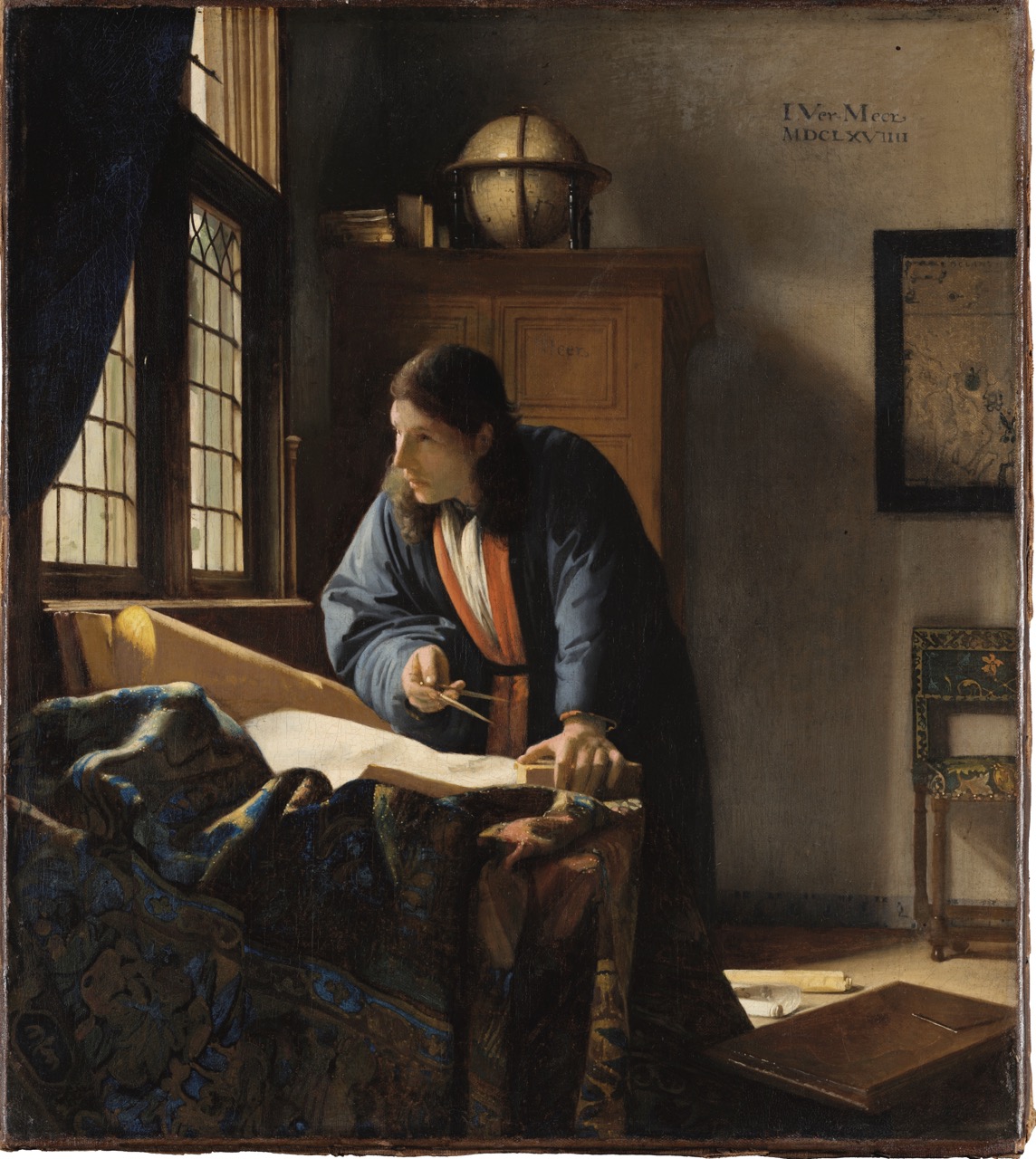Johannes Vermeer’s 1668 painting The Astronomer is one of the artist’s two science-themed works and is often considered together with The Geographer. Executed in oil on canvas, this work is today on display at the Louvre Museum in Paris. In the scene, a solitary male figure sits at a desk, reaching toward the celestial globe before him. On the table there are also an open book, an astrolabe, and various bound volumes. The scientific instruments toward which the figure is oriented, and the careful arrangement of the room, position him as both a researcher and an observer. Vermeer illuminates the figure with soft side light, creating a serene atmosphere that exalts the pursuit of scientific knowledge.
In the 1880s, the painting was purchased by Baron Alphonse de Rothschild, a member of the Parisian Rothschild family. It later passed to his son, Édouard de Rothschild. In 1940, during the Nazi occupation of France, the works from Édouard de Rothschild’s collection (including this painting) were seized and transported to Germany by order of Adolf Hitler. The Astronomer was among the works selected for Hitler’s Führermuseum project.

The Astronomer, Johannes Vermeer, 1668 (Rawpixel)
Composition
Vermeer’s The Astronomer unfolds within a carefully composed interior. Natural light entering from the left falls softly upon the figure’s face and the objects on the desk. On the table lie an open book, an astrolabe, and a celestial globe; these elements underscore the figure’s scientific endeavor and intellectual intensity. The text on the right-hand page of the book explains “how the positions of stars in the sky can be determined based on longitude and latitude using certain geometric instruments.”

Detail of the celestial globe, astrolabe, and Adriaen Metius’s book in The Astronomer (Rawpixel)
The male figure leans toward the celestial globe; as he gestures to it with his right hand, his gaze conveys deep and concentrated thought. In the background, there are books, pages with maps or diagrams, and various scientific instruments. On the wall, hangs a painting depicting the scene of The Finding of Moses. This arrangement keeps the figure at the center while symbolizing a meaningful universe surrounded by scientific activity.
Iconography
From an iconographic perspective, the painting reflects the 17th-century fascination with knowledge and the belief in humankind’s ability to comprehend the celestial order. The open book on the table is Adriaen Metius’s Institutiones Astronomicae & Geographicae, which provides information on calculating the positions of stars using geometric measuring instruments. The astrolabe is aligned with the base of the celestial globe; this spatial relationship indicates that book, globe, and measuring instrument are understood as interconnected. The scene of The Finding of Moses on the wall symbolizes that the quest for knowledge has not only a worldly but also a divine dimension. In this way, Vermeer’s composition establishes a deliberate visual dialogue between scientific instruments and sacred themes.

The Finding of Moses scene on the wall behind the astronomer (Rawpixel)
Techniques
The techniques Vermeer employed in The Astronomer demonstrate his emphasis on the perception of light and space. The composition is modeled around a strong left-hand light source; natural light from the window spreads softly across the figure’s face, hands, and the objects on the desk. Vermeer likely used a camera obscura (a darkened box) to create this graduated illumination. This method allowed him to capture light effects and fine details with remarkable precision.
The color palette is limited. The green tablecloth, the blue garment, the light-colored walls, and the pastel-toned details create a calm atmosphere. Thin layers of glaze (transparent paint layers) lend surfaces both softness and depth. In the fabric textures and the sheen on the celestial globe, the sparkling effect produced by Vermeer’s short, precise brushstrokes is especially apparent. Moreover, the detailed rendering of objects on the desk—particularly the astrolabe and the open book—reflects the artist’s meticulous attention to surface textures and material differences. Through these techniques, Vermeer conveys both scientific rigor and aesthetic subtlety simultaneously.
Identity of the Astronomer
The identity of the figure in The Astronomer has long been debated among art historians. The man depicted is often associated with the 17th-century Delft scientist and pioneer of the microscope Antonie van Leeuwenhoek. Proponents of this view point out that the figure bears physical similarities to known portraits of van Leeuwenhoek—such as a long, straight nose and a broad forehead—and note that Vermeer and van Leeuwenhoek lived in Delft at the same time and likely moved in similar social circles.
However, in the absence of conclusive evidence, there is no consensus that the figure is indeed van Leeuwenhoek. Some scholars argue that Vermeer’s model was an anonymous scientist meant to represent a more universal ideal of the scholar. Indeed, the same model appears in both The Astronomer and its counterpart The Geographer, each time representing a different professional identity. This supports the idea that Vermeer selected the figure not as a portrait of a specific individual but as an embodiment of the intellectual typology of his age. In doing so, Vermeer presents both a personal likeness and a reflection of the universal nature of scientific discovery.

The Geographer, Johannes Vermeer, 1669 (Städel Museum)


